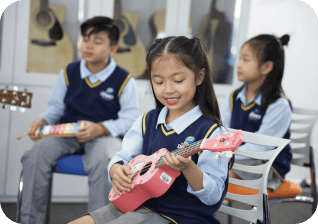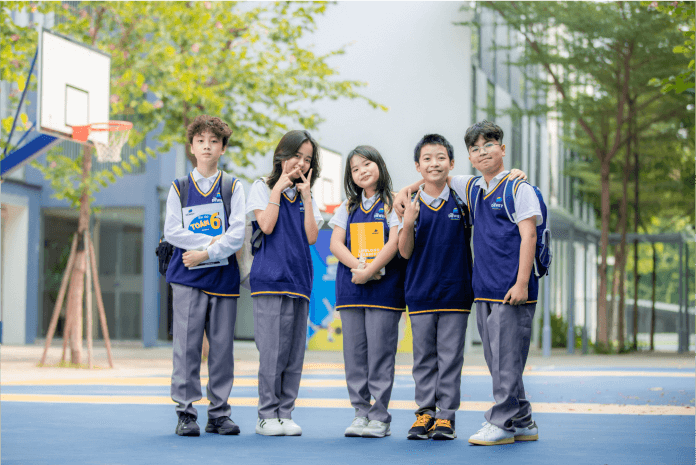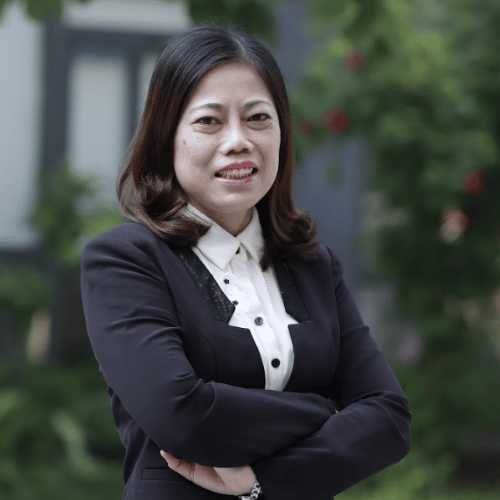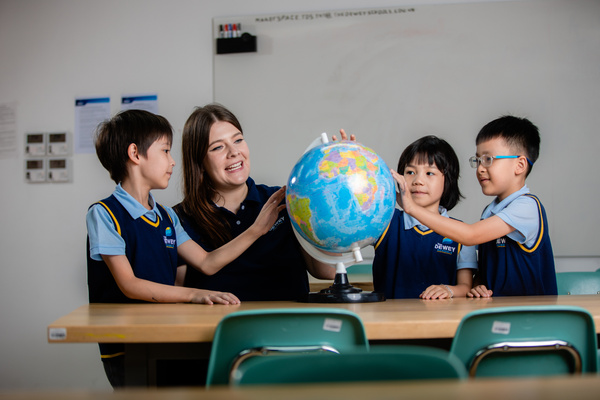
I. POLICY STATEMENT
At TDS, we are committed to providing a high-quality, safe, and healthy education environment for students, where their well-being is protected. With our responsibilities and through appropriate actions, we (including all teachers, staff, and other stakeholders) are committed to promoting activities that protect children from abuse, violence, neglect, and society’s vices. Whenever there is reasonable cause to doubt that a child’s rights are violated, we will use all resources in our highest capacity to restore those rights and ensure TDS is the place parents look for, students love, and staff are proud of.
We ensure that:
- All children will be treated equally and respectfully and have the right to be protected and uphold their rights according to the United Nations Convention on the Rights of the Child, Vietnam’s Law on Children and guiding documents as well as the CIS Code of Ethics.
- There is zero tolerance for any activity related to child abuse, violence, neglect, or society’s vices at school.
- Child safeguarding and protection procedures and guidelines are attached to this Policy and are disseminated to all teachers, staff, and stakeholders for implementation through training, propaganda, and compliance commitments.
- Create favorable conditions for parents or guardians to contribute their ideas for child safeguarding and protection activities.
- All teachers and staff of the School have been chosen through a safe recruitment procedure, and their roles, responsibilities, and appropriate responses (including notification and cooperation with authorities if necessary) have been clearly understood.
II. INTERPRETATION OF TERMS AND ABBREVIATIONS
– Child abuse refers to any act that causes harm to the physical strength, emotion, psychology, honor, or dignity of a child in the form of violence, exploitation, mental or physical abuse, sexual abuse, trafficking, neglect, abandonment, or other harmful forms.
Child abuse includes the following:
- Physical abuse and mental abuse are forms of maltreatment of a child, which can be physical, sexual, or emotional. Neglect is a form of abuse, and sexual exploitation is a form of sexual abuse. Somebody may abuse a child by inflicting harm, or by failing to act to prevent harm. Children may be abused in a family or in an institutional or community setting by those known to them or, more rarely, by others. Abuse can take place wholly online, or technology may be used to facilitate offline abuse. Children may be abused by an adult or adults, or by another child or children.
- Peer-on-peer abuse is used to describe children abusing other children in the form of violence, bullying, harassment, or any act causing physical, mental, or psychological harm.
- Child violence means acts of persecuting, maltreating, beating; infringing upon the body and health; insulting or hurting the honor or dignity; isolating, driving away, and other intentional acts that cause physical and mental harm to a child in an educational institution or independent class.[1]
- Child exploitation means acts of forcing a child to work in contravention of the labor law; demonstrating or manufacturing pornographic products; organizing or supporting tourist activities for the purpose of child sexual abuse; giving, receiving, or supplying children for prostitution activities and other acts of employing children for self-seeking purposes.
- Child sexual abuse means the use of violence, threat to use violence, coercion, dragging, or enticement of a child into sex-related acts including raping, coercive intercourse, sexual intercourse or debauchery with a child or employing a child for prostitution or pornographic purposes in any form.
- Child abandonment or neglect means the failure to perform or fulfill the obligations and responsibilities to take care of and nurture a child by his/her parents or caregivers.
– Society’s vices refer to negative phenomena manifesting through deviation from social norms, violation of ethics and current laws, ruining traditional customs, healthy lifestyles, and improvements in society, which results in serious consequences for individuals, families, and society. Society’s vices include but are not limited to drug use, prostitution, gambling, superstition, and alcoholism.
– Student well-being refers to the psychological, cognitive, social, and physical functioning and capabilities that students need to maintain their mental health, and based on which learning difficulties and other problems can be identified to provide timely support.
[1] Clause 5 Article 2 Decree No. 80/2017/NĐ-CP dated 17/07/2017 by the Government
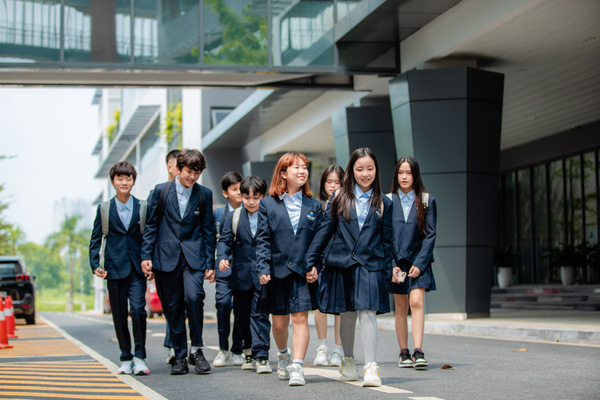
III. CHILD SAFETY PRINCIPLES
1. Safer Recruitment
At TDS, we have developed recruitment regulations and procedures to recruit teachers and staff who not only acquire qualifications as required by Vietnam’s law and the School’s competency framework but also can protect children from physical, mental, or emotional harm, meeting the international standards for child safety and enhancing Vietnam’s education.
In any case, TDS reserves the right not to recruit a candidate if the recruitment process shows that that candidate is not suitable for working with children or is a concern for children. The School will not recruit or hire anyone who has been convicted of abuse, violence, society’s vices, or similar violations.
2. Management and Supervision System
The School develops management, supervision, and information exchange mechanisms to create a positive support environment for feedback and reporting on issues related to child safeguarding and protection such as the following:
- The roles and responsibilities of supervisors and managers are specifically assigned and clarified to ensure that everyone involved understands.
- Supervise, monitor, evaluate, and support all staff and teachers to ensure that child safeguarding and protection policies, regulations, instructions, procedures, etc. are understood and implemented and any arising issues or concerns are promptly addressed.
- Comply with regulations on the archiving and confidentiality of information related to child safeguarding and protection.
- Receive feedback regarding school safety management and supervision from parents and external organizations.
- The School conducts a periodic survey on students’ mental health, aiming to promptly identify students with special needs and support their comprehensive development and well-being.
3. Code of Conduct
The Code of Conduct is developed and updated to meet TDS’s needs, including instructions on appropriate behaviors toward children for teachers, staff, and other stakeholders. The Code of Conduct also lets children know which behaviors are considered inappropriate to avoid potential misunderstandings that can lead to allegations of child abuse, violence, neglect, and society’s vices.
Apart from that, the School also develops procedures to guide the handling when detecting or suspecting a child protection rights violation such as abuse, bullying, harassment, violence, neglect, and society’s vices.
4. Training and Communications
- All teachers and staff must attend a training course on Child Safeguarding and Protection Policy before working at the School and participate in annual training in the following years.
- Teachers and staff are trained on how to identify signs related to abuse, bullying, violence, neglect, and society’s vices, including how to approach and report.
- Training students on the age-appropriate content of child safety, including training on self-defense, safety skills, comprehensive sexuality education, and the ways of reporting and denouncing when there is a violation of the code of conduct toward children.
- The Code of Conduct, policies, regulations, instructions, procedures, etc. related to child safeguarding and protection should be communicated to contractors, partners, guests/visitors, and stakeholders and they must be committed to complying with such documents before working at the School.
- Communicate the Child Safeguarding and Protection Policy and the School’s annual activities related to the comprehensive development and well-being of the students to parents.

5. Report and Actions
- Principles of reporting and taking actions should ensure the best interests of children and are based on levels of child protection such as prevention level, assistance level, and intervention level as defined in the Law on Children.
- The School provides a child safeguarding and protection report system for all subjects working within the School including instructions, reporting forms, and archiving and confidentiality of relevant information.
- When there is a Child Safeguarding and Protection Policy violation, the discoverer will report it to the DSL (Designated Safeguarding Lead – the assigned School Safety Team Leader) according to the procedures for reporting and handling school safety issues.
- The School applies ways of identifying behaviors of abuse, peer-on-peer abuse, or neglect by age as well as approaching and supporting methods for those affected during and after an allegation related to the Child Safeguarding and Protection Policy to minimize negative impacts.
6. Violation Handling Methods
- For teachers and staff: If an allegation is from a verifiable source of information, the alleged individual will be suspended from work while an independent investigation is conducted to ensure that the child is safeguarded from the risk of harm that could affect the investigation process. At the same time, the School sets rules for disciplinary actions and other actions to ensure that child safeguards are taken.
- For visitors, partners, and contractors: Upon knowing any concern related to the child safeguarding and protection violation, the School will suspend the work of the visitors, partners, or contractors at school and work with the authorities to investigate and handle the case according to the legal regulations.
- For parents and guardians: When receiving information or denunciations about domestic violence, the School must immediately notify the Chairman of the Commune-level People’s Committee where the domestic violence occurs. Also, the School should participate in preventing domestic violence to the best of its ability and coordinate with State agencies and competent persons according to the legal regulations on domestic violence prevention and control to verify reports and denunciations of domestic violence acts upon request.
- For students: The School has developed a Disciplinary Policy to handle student violations including peer-on-peer abuse or other violations related to child safeguarding and protection policy during school learning.
IV. GENDER INCLUSION
This is intended to create an inclusive, respectful, and equitable learning and working environment for all, regardless of gender, gender identity, or sexual orientation. The School is committed to promoting diversity and inclusion, ensuring everyone is treated equally and fairly with respect for diversity and has the opportunity to access comprehensive development.
The promotion of comprehensive sexuality education such as human development, gender respect and equality, social relations, personal skills, sexuality and thinking orientation, sexual health, and social influence, etc. will be included in the teaching and learning process to equip students with necessary skills and knowledge and create a safe and inclusive learning environment for all students.
When informed of discrimination and harassment, the School will proceed to handle violations according to the principles of ensuring child safety.
V. ONLINE SAFETY
The School is committed to creating a safe, healthy, and secure online environment, preventing acts of abuse and bullying in cyberspace. The School also develops a Responsible Use Policy for Technology to provide regulations and instructions on information security, internet safety, and prevention of online bullying and fraud for students and to help educate students and raise awareness of parents and students when students are allowed to use the internet.
When informed of online abuse, bullying, or fraud, the School will proceed to handle violations according to the principles of ensuring information security and children’s safety.




